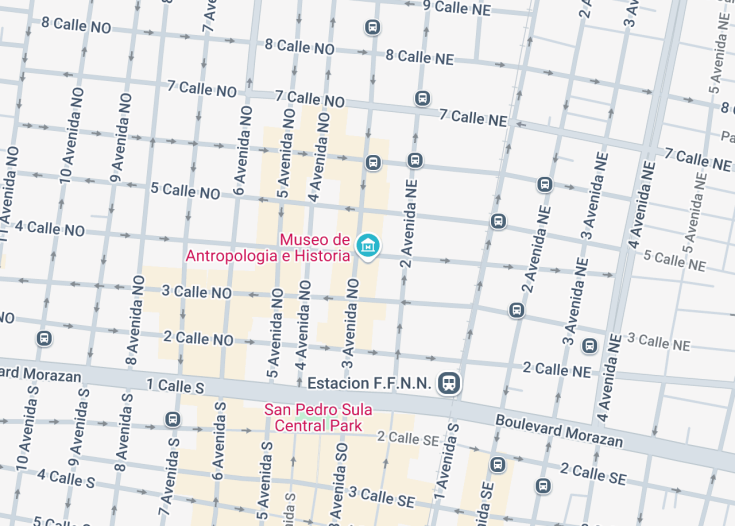The Museo de Antropología e Historia in Honduras is a pivotal cultural institution dedicated to preserving and showcasing the rich anthropological and historical heritage of the country. Located in the capital, Tegucigalpa, the museum offers a profound insight into the indigenous civilizations, particularly the Mayan culture, that once thrived in the region. It features an extensive collection of artifacts, including pottery, sculptures, and jewelry, each narrating a unique story of the past civilizations and their contemporary descendants.
To make the most of your visit, consider joining a guided tour available in multiple languages to gain deeper insights into the exhibits and their historical context.
Plan your visit to coincide with one of the museum’s many workshops or special exhibitions, which offer interactive experiences and detailed explorations of specific cultural themes or periods.
Museo de Antropologia e Historia: A Gateway to the Past
The Museo de Antropologia e Historia located in San Pedro Sula, Honduras, offers a captivating glimpse into the rich cultural tapestry and history of the region. This museum is renowned for its well-curated exhibits that showcase artifacts from the pre-Columbian era to contemporary times. It stands as a significant repository of ancient Mayan artifacts, colonial period relics, and ethnographic studies on the indigenous peoples of Honduras.
Tourists are often drawn to its interactive exhibits, which provide insights into the archaeological practices and findings in Honduras. The museum’s architecture itself is noteworthy, featuring a blend of modern design and traditional motifs, creating a welcoming atmosphere for visitors. For those interested in understanding the historical and cultural evolution of Central America, the Museo de Antropologia e Historia is an indispensable visit. It not only educates but also inspires appreciation for the heritage and ongoing historical narrative of Honduras.
Exploring the Exhibits
The Museo de Antropologia e Historia houses several permanent exhibits that engage visitors of all ages. Noteworthy sections include the Mayan Civilization gallery, which displays an array of pottery, sculpture, and jewelry that illuminate the sophistication of Mayan artisans. Another significant exhibit is the ‘Colonial Honduras’, which depicts the life and times during the Spanish colonization through artifacts like coins, weapons, and documents.
For those interested in the ethnic diversity of Honduras, the ‘Ethnographic Collection’ offers insights into the lives of the Lenca, Miskito, and Garifuna communities, showcasing traditional attire, musical instruments, and ceremonial items. Each exhibit is well-explained, ensuring that visitors leave with a heightened understanding and appreciation of Honduran history and culture.
A Unique Artifact: The Lencan Urn
Perhaps the most intriguing item in the Museo de Antropologia e Historia is the ancient Lencan Urn. This urn is believed to be over a thousand years old and is an excellent example of the ceramic skills of the Lenca people. It is adorned with intricate geometric patterns and icons that are thought to represent cosmological and spiritual beliefs of the time.
The urn is not only a testament to the craftsmanship of the indigenous people but also provides valuable insights into the ceremonial practices and societal structures of ancient Honduran civilizations. It is a must-see artifact that fascinates archaeologists and history buffs alike.
Discover the wonders of the Museo de Antropologia e Historia
The Museo de Antropologia e Historia is an ideal destination for all age groups, including families with children, couples seeking a cultural outing, and older visitors interested in the rich history of the region. The museum offers a fascinating glimpse into the local culture through its extensive exhibits featuring ancient artifacts, traditional costumes, and historical documents.
Visitors can expect an enriching experience that provides deep insights into the civilization and historical events that have shaped the area. Engaging multimedia displays and interactive installations ensure an educational visit for everyone, making it especially appealing to children and students.
Best time to visit the Museo de Antropologia e Historia
The museum is a wonderful visit throughout the year; however, the dry season, running from November to April, offers comfortable weather for exploring. Visiting during these months means less likelihood of rain disruptions during your tour.
Special annual events
If you are looking for a unique time to visit, consider aligning your trip with the Heritage Festival held annually in March. This event features special exhibits, workshops, and lectures that are not available at other times.
Accessibility and limitations at the Museo de Antropologia e Historia
Understanding the accessible services and limitations is crucial for planning a visit to the Museo de Antropologia e Historia.
Accessibility
The museum is equipped with wheelchair ramps and elevators to assist visitors with mobility challenges. Special seating arrangements are available upon request.
Limitations
- Photography restrictions in certain exhibits.
- No large bags or backpacks allowed in the galleries.
- Food and drinks are not permitted inside the museum galleries.
Notes to visitors
- Please use whisper tones in the exhibit areas.
- Strollers may be restricted in some galleries due to space constraints.
General information
Essential details for your visit to the Museo de Antropologia e Historia
Location
The museum is conveniently located near the bustling market district, easily accessible from several major roads and public transport routes.
Address:
Museo de Antropologia e Historia, Historical Avenue, San Pedro Sula, Honduras
Opening hours
Monday to Friday: 9 AM – 5 PM
Saturday: 10 AM – 4 PM
Closed on Sundays
Arriving at the Museum
By Car
Access to the museum by car is straightforward, with parking available at the facility.
| Route | Distance | Travel time |
|---|---|---|
| From Central Park San Pedro Sula | 3 miles (5Km) | 10 minutes |
| From Catedral San Pedro Apostol | 1 mile (1.6Km) | 5 minutes |
| From University of San Pedro Sula | 2 miles (3.2Km) | 6 minutes |
By Public Transport
Several bus lines stop near the museum, offering easy access from major accommodations and city points.
Nearby Attractions
- Cathedral of Saint Peter the Apostle – 0.9 miles (1.5 km)
- San Pedro Sula Central Park – 1 mile (1.6 km)
- City Mall – 1.2 miles (1.9 km)
- Guamilito Market – 800 meters (0.8 km)
- Zizima Eco Water Park – 2 miles (3.2 km)
- Multiplaza Mall – 2.1 miles (3.4 km)
- Angeli Gardens – 2.5 miles (4 km)
- The Banana Museum – 3 miles (4.8 km)
- Medina Art Gallery – 3.5 miles (5.6 km)
- El Cortijo Wine and Steak – 3 miles (4.8 km)
- Honduran Archeology Museum – 3.8 miles (6.1 km)
- Bird Mountain Coffee Tour – 4 miles (6.4 km)
Common questions
What are the main attractions at the Museo de Antropología e Historia in Honduras?
What type of educational programs are available at the Museo de Antropología e Historia?
Are there any interactive exhibits at the Museo de Antropología e Historia?
Can I take photographs inside the Museo de Antropología e Historia?
Is the Museo de Antropología e Historia accessible for visitors with disabilities?
What are the dining options near the Museo de Antropología e Historia?
How can I volunteer at the Museo de Antropología e Historia?
What is the significance of the architecture of the Museo de Antropología e Historia building?
Are there special events hosted at the Museo de Antropología e Historia?
Can I book a private tour of the Museo de Antropología e Historia?
What are the cultural significance of exhibits at the Museo de Antropología e Historia?
Does the Museo de Antropología e Historia provide resources or publications for further learning?

Is the Museo de Antropología e Historia in San Pedro Sula worth visiting?
The Museo de Antropología e Historia in San Pedro Sula is often considered a vital visit for those interested in the rich tapestry of Central American history and culture. This museum offers a profound insight into the indigenous peoples of the region, their history, and the impact of European colonization. It houses many important artifacts that are well preserved and presented in a compelling layout. For tourists looking to deepen their understanding of Honduras and its cultural heritage, this museum provides a comprehensive overview in a concise, informative manner.
However, the museum could further improve by enhancing its interactive displays and English translations to cater better to international visitors. Overall, the Museo de Antropología e Historia stands out as a key cultural institution in San Pedro Sula, serving both educational and historical preservation purposes.










